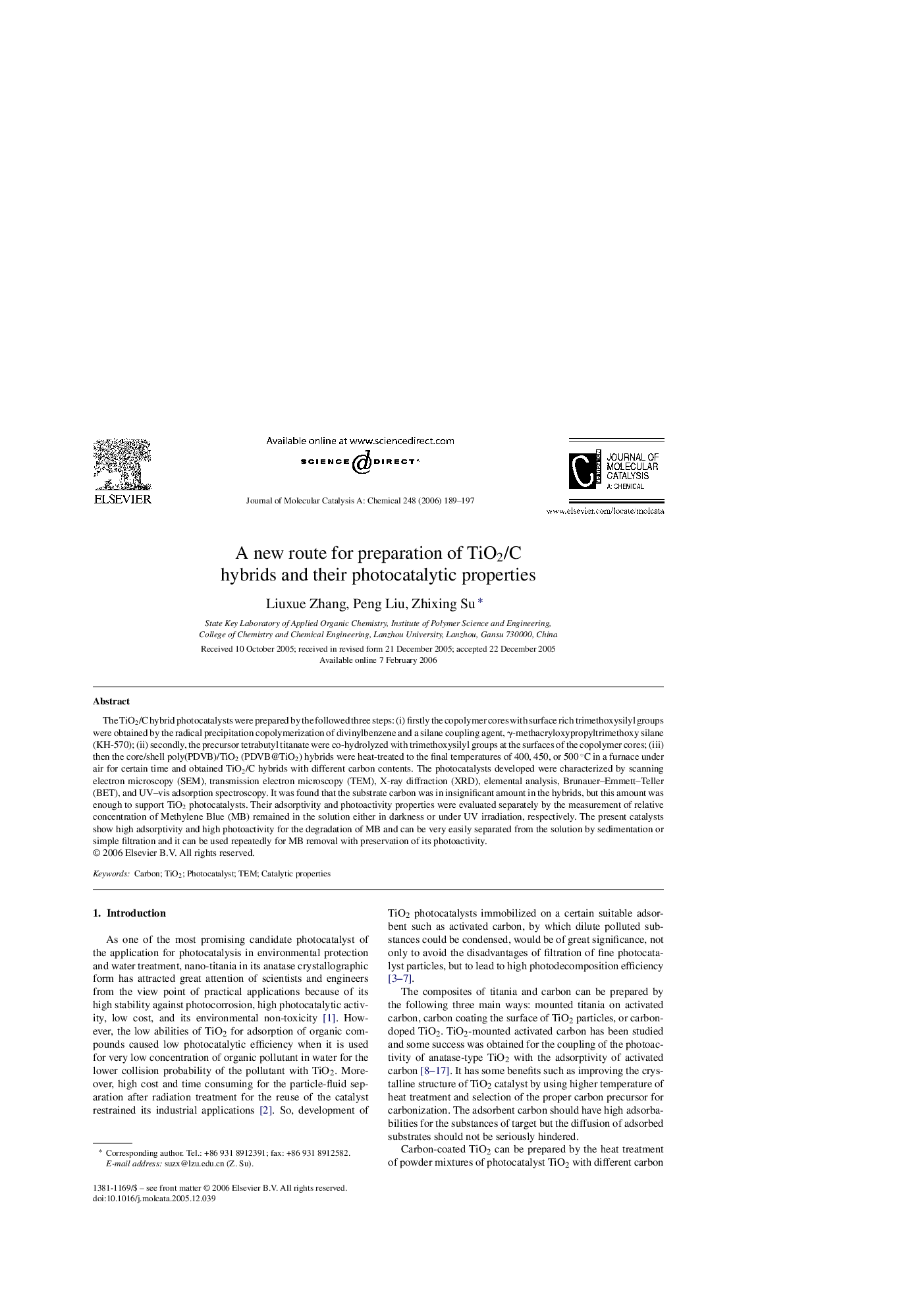| Article ID | Journal | Published Year | Pages | File Type |
|---|---|---|---|---|
| 69197 | Journal of Molecular Catalysis A: Chemical | 2006 | 9 Pages |
The TiO2/C hybrid photocatalysts were prepared by the followed three steps: (i) firstly the copolymer cores with surface rich trimethoxysilyl groups were obtained by the radical precipitation copolymerization of divinylbenzene and a silane coupling agent, γ-methacryloxypropyltrimethoxy silane (KH-570); (ii) secondly, the precursor tetrabutyl titanate were co-hydrolyzed with trimethoxysilyl groups at the surfaces of the copolymer cores; (iii) then the core/shell poly(PDVB)/TiO2 (PDVB@TiO2) hybrids were heat-treated to the final temperatures of 400, 450, or 500 °C in a furnace under air for certain time and obtained TiO2/C hybrids with different carbon contents. The photocatalysts developed were characterized by scanning electron microscopy (SEM), transmission electron microscopy (TEM), X-ray diffraction (XRD), elemental analysis, Brunauer–Emmett–Teller (BET), and UV–vis adsorption spectroscopy. It was found that the substrate carbon was in insignificant amount in the hybrids, but this amount was enough to support TiO2 photocatalysts. Their adsorptivity and photoactivity properties were evaluated separately by the measurement of relative concentration of Methylene Blue (MB) remained in the solution either in darkness or under UV irradiation, respectively. The present catalysts show high adsorptivity and high photoactivity for the degradation of MB and can be very easily separated from the solution by sedimentation or simple filtration and it can be used repeatedly for MB removal with preservation of its photoactivity.
Graphical abstractLinear transform ln(C0/C) = f(t) of the kinetic curves of MB depigmentation for different photocatalysts at 90 min of irradiation. Figure optionsDownload full-size imageDownload as PowerPoint slide
